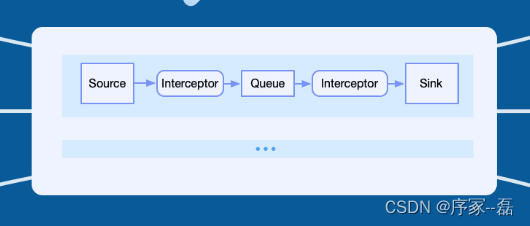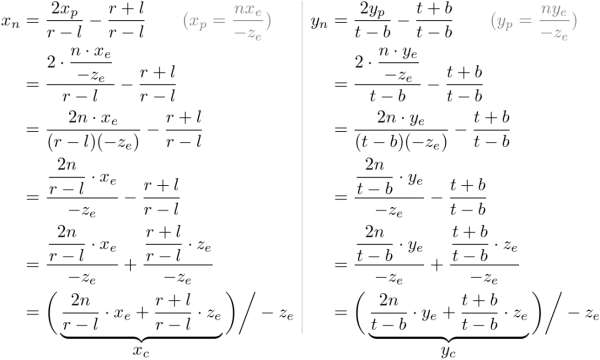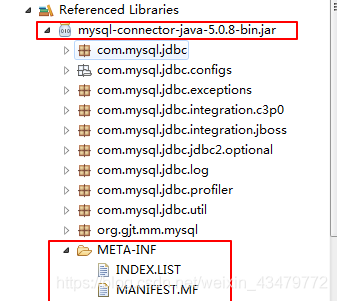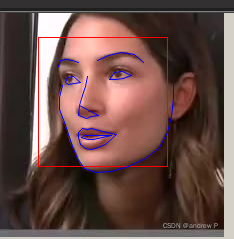当前位置:网站首页>Calculation formula related to tolerance analysis
Calculation formula related to tolerance analysis
2022-04-23 16:53:00 【Tassel 1990】
1、 Analysis of dimension chain formula : The inverse Polish algorithm is used to solve the parsing of string expression , for example K=A+B-C
2、 According to the dimension chain formula, each factor is obtained , And get the component number and the number of factors
3、 Fill in the average and standard deviation of each component ( If there is sample data, use the sample data for effective calculation to obtain the mean value and standard deviation )
4、 Generate simulation data according to the average value and standard deviation of each component ( The number of simulations should be filled in )
4.1、 use boost High quality library generation Random number conforming to normal distribution
5、 Loop traversal Simulation times , And according to the dimension chain formula , obtain K An array of values , as follows :
// Number of factors
int factorCount = this.keyPairDataList.Keys.Count;
// According to the formula K value
double[] kValueList = new double[sumCount];
RPN rpn = new RPN();
string formula = string.Empty;
for (int index = 0; index < sumCount; index++)
{
formula = "A+B-C";
foreach (string strPair in this.keyPairDataList.Keys)
formula = formula.Replace(strPair, this.keyPairDataList[strPair].ElementAt(index).ToString());
if (rpn.Parse(formula))
kValueList[index] = Convert.ToDouble(rpn.Evaluate());
}6、 Calculation K The standard deviation and average of the value array
7、 According to the upper specification limit 、 Lower specification limit 、 The goal is CPK Calculate the reference standard deviation and the reference average . The formula is as follows :
7.1、 Reference average :( Upper specification limit + Lower specification limit )/2
7.2、 Reference standard deviation :( Upper specification limit - Lower specification limit )/( The goal is CPK*6)
8、 The variance is calculated according to the standard deviation , The formula is as follows :
8.1、 Reference variance : The standard deviation of the reference square
9、 Calculate sensitivity
9.1、 Determine the sensitivity formula ( The formula 1: Sensitivity = Difference value /(∑Math.abs( Difference value )+0.00001), The formula 2: Sensitivity =( Difference value / Math.Abs( Difference value )) * Math.Pow( Difference value , 2) * Math.Pow( The standard deviation of the current number of factors , 2) / Reference variance )
9.2、 Difference calculation :
9.2.1、 According to the dimension chain formula and the average value of each component ( Bring the average value into the formula ), To calculate the Y value ;
9.2.2、 To calculate the y1 ,
9.2.2.1、 Calculate the current component, then the average value of the current component +1, Bring in dimension chain formula , To calculate the y1 value .
9.2.2.2、 Difference value =Y It's worth it y1 The difference between the values ;
9.2.3、∑Math.abs( Difference value )= The sum of the difference of each component ;
9.2.4、 Sensitivity = Sensitivity = Component difference /(∑Math.abs( Difference value )+0.00001)
10、 optimal design
10.1、 Select the project with the largest sensitivity factor for optimization , Adjusted mean 、 Adjust the standard deviation
10.1.1、 Adjusted mean , Then regenerate the simulation data for calculation obtain CPK The value of is within a reasonable range ( And target CPK The difference is 0.01 about )
10.1.2、 Adjust the standard deviation , Then regenerate the simulation data for calculation obtain CPK The value of is within a reasonable range ( And target CPK The difference is 0.01 about )
10.1.3、 First determine the adjustment direction , Make numerical adjustment in turn .
10.2、 When multiple factors are selected, they can be adjusted according to the proportion , If each factor is adjusted 50%
10.3、 The calculation logic is listed below :
10.3.1、 The absolute value of sensitivity is arranged from large to small , And exclude the factor of freezing adjustment
10.3.2、 Even if the target value , The goal is CPK=( Manual input ), Target average =( Upper specification limit + Lower specification limit )/2, Target standard deviation =( Target average - Lower specification limit )/(3* The goal is CPK)
10.3.4、 Calculate how many factors need to be adjusted
10.3.4.1、 Loop through the current factor
10.3.4.2、 Sets the standard deviation of the current factor = The lower limit of the standard deviation of the current factor
10.3.4.3、 Generate simulation data , To calculate the Y The average value of is equal to Y Standard deviation , as well as CPK
10.3.4.4、 When it is determined that the calculated standard deviation is less than the target standard deviation, proceed to break, And get how many factors need to be changed
10.3.5、 Confirm the number of factors to be changed , And traverse
10.3.6、while(true) Cycle calculation , The simulation data is generated by the average value of the factor and the standard deviation of the factor , And calculate Y The average value of is equal to Y Standard deviation , as well as CPK
10.3.7、 Calculate the difference in the average =Y Average value - Target average ;
10.3.8、 progress step=( The difference in the average /2)/ Sensitivity of current factor
10.3.9、 Set the average value of the next calculation = The average value of the current factor + progress step;
10.3.10、 Calculate the standard deviation difference =Math.Sqrt(Math.Abs(Math.Pow(Y Standard deviation , 2) - Math.Pow( Target standard deviation , 2)));
10.3.11、 Standard deviation improvement step=Math.Sqrt(Math.Pow( Standard deviation difference , 2) / 2);
10.3.12、Y If the standard deviation of is less than the target standard deviation, then , Take the opposite direction
10.3.13、 Set the standard deviation of the next calculation = The standard deviation of the current factor - Standard deviation improvement step
10.3.4、 Set the calculated CPK When it is greater than the target standard deviation, the cycle is pushed out
版权声明
本文为[Tassel 1990]所创,转载请带上原文链接,感谢
https://yzsam.com/2022/04/202204231359253569.html
边栏推荐
- 05 Lua control structure
- BUG_ me
- PostgreSQL列存与行存
- Rtklib 2.4.3 source code Notes
- Disk management and file system
- Detailed explanation of file operation (2)
- org. apache. parquet. schema. InvalidSchemaException: A group type can not be empty. Parquet does not su
- Use case labeling mechanism of robot framework
- NVIDIA显卡驱动报错
- 1959年高考数学真题
猜你喜欢
随机推荐
Loggie source code analysis source file module backbone analysis
Creation of RAID disk array and RAID5
◰ GL shadow map core steps
Calculate pie chart percentage
04 Lua operator
An essay on the classical "tear down the wall in thinking"
Getting started with JDBC
博士申请 | 厦门大学信息学院郭诗辉老师团队招收全奖博士/博后/实习生
Detailed explanation of information abstract, digital signature, digital certificate, symmetric encryption and asymmetric encryption
ACL 2022 | dialogved: a pre trained implicit variable encoding decoding model for dialogue reply generation
Derivation of Σ GL perspective projection matrix
oracle 中快速获取表的列名列表
loggie 源码分析 source file 模块主干分析
05 Lua control structure
计算饼状图百分比
Use case labeling mechanism of robot framework
Real time operation of vim editor
◰GL-着色器处理程序封装
Pycham connects to the remote server and realizes remote debugging
Detailed explanation of the penetration of network security in the shooting range









